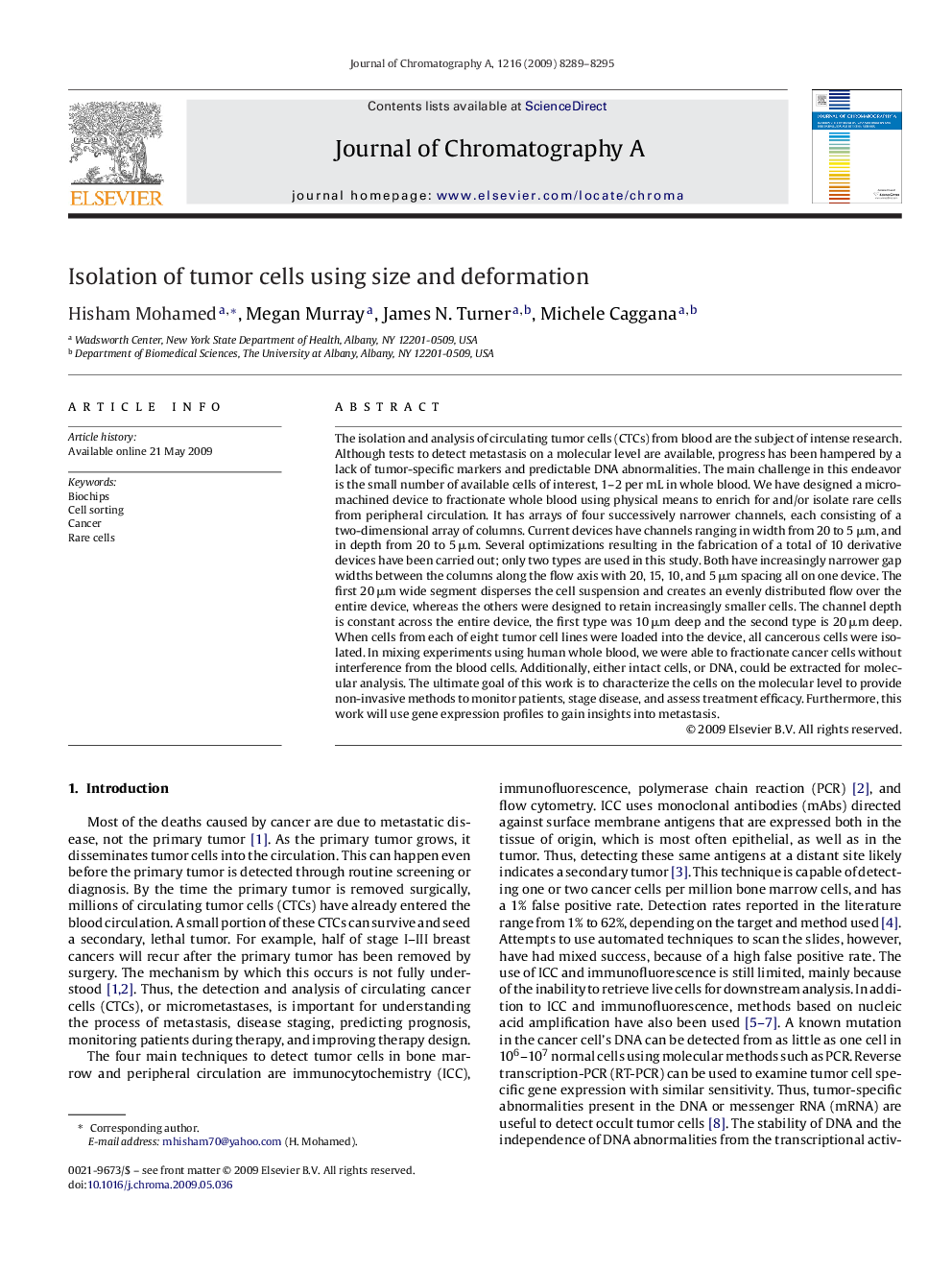| Article ID | Journal | Published Year | Pages | File Type |
|---|---|---|---|---|
| 1204737 | Journal of Chromatography A | 2009 | 7 Pages |
The isolation and analysis of circulating tumor cells (CTCs) from blood are the subject of intense research. Although tests to detect metastasis on a molecular level are available, progress has been hampered by a lack of tumor-specific markers and predictable DNA abnormalities. The main challenge in this endeavor is the small number of available cells of interest, 1–2 per mL in whole blood. We have designed a micromachined device to fractionate whole blood using physical means to enrich for and/or isolate rare cells from peripheral circulation. It has arrays of four successively narrower channels, each consisting of a two-dimensional array of columns. Current devices have channels ranging in width from 20 to 5 μm, and in depth from 20 to 5 μm. Several optimizations resulting in the fabrication of a total of 10 derivative devices have been carried out; only two types are used in this study. Both have increasingly narrower gap widths between the columns along the flow axis with 20, 15, 10, and 5 μm spacing all on one device. The first 20 μm wide segment disperses the cell suspension and creates an evenly distributed flow over the entire device, whereas the others were designed to retain increasingly smaller cells. The channel depth is constant across the entire device, the first type was 10 μm deep and the second type is 20 μm deep. When cells from each of eight tumor cell lines were loaded into the device, all cancerous cells were isolated. In mixing experiments using human whole blood, we were able to fractionate cancer cells without interference from the blood cells. Additionally, either intact cells, or DNA, could be extracted for molecular analysis. The ultimate goal of this work is to characterize the cells on the molecular level to provide non-invasive methods to monitor patients, stage disease, and assess treatment efficacy. Furthermore, this work will use gene expression profiles to gain insights into metastasis.
